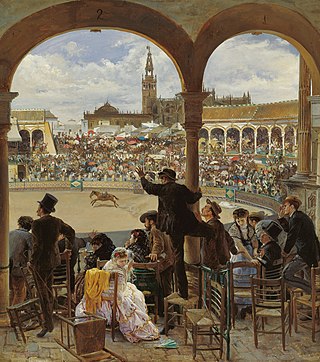
Costumbrismo is the literary or pictorial interpretation of local everyday life, mannerisms, and customs, primarily in the Hispanic scene, and particularly in the 19th century. Costumbrismo is related both to artistic realism and to Romanticism, sharing the Romantic interest in expression as against simple representation and the romantic and realist focus on precise representation of particular times and places, rather than of humanity in the abstract. It is often satiric and even moralizing, but unlike mainstream realism does not usually offer or even imply any particular analysis of the society it depicts. When not satiric, its approach to quaint folkloric detail often has a romanticizing aspect.
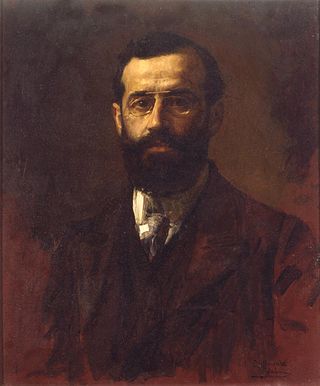
Luis Menéndez Pidal was a Spanish painter; primarily of genre scenes..

Manuel García y Rodríguez was a Spanish costumbrista and landscape painter, who also painted Orientalist scenes.

José Moreno Carbonero was a Spanish painter and decorator. A prominent member of the Málaga School of Painting, he is considered one of the last great history painters of the 19th century. He was a celebrated portrait painter who enjoyed the patronage of Madrid's high society. He also created genre scenes and some landscapes, vedutas and still lifes.

Luis Álvarez Catalá was a Spanish painter of historical scenes and Director of the Museo del Prado from 1898 to 1901.

Luis de Madrazo y Kuntz was a Spanish painter of portraits and religious scenes from a well-known family that included his father José, and his brothers Federico, Pedro and Juan. His Polish grandfather Tadeusz Kuntze was a painter as well.

José Villegas Cordero was a Spanish painter of historical, genre and costumbrista scenes.

Plácido Francés y Pascual was a Spanish painter who specialized in portraits, historical scenes and Costumbrista.
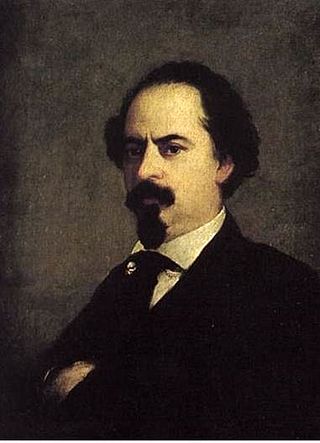
Eugenio Lucas Velázquez was a Spanish painter in the Romantic style, known for genre and costumbrista scenes which often featured fantastic elements. Nineteenth-century sources refer to him as Eugenio Lucas Padilla, which has caused some confusion, although it seems reasonable to assume that Velázquez was an adopted name. Few of his paintings are signed, causing a problem with attribution.
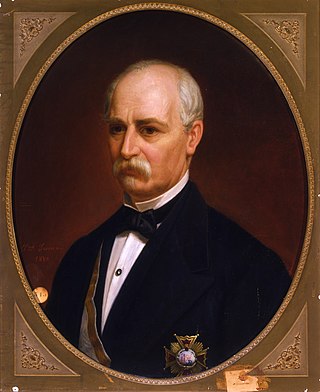
Joaquim Espalter i Rull or, in Spanish, Joaquín Espalter y Rull was a Catalan painter who spent most of his career in Madrid; known primarily for portraits and historical scenes.

Eugenio Lucas Villaamil, sometimes called "The Younger" was a Spanish costumbrista painter. Many of his works were painted in the style of Francisco de Goya; and the attributions are sometimes confused.

Eugenio Oliva y Rodrigo was a Spanish painter, primarily known for his murals.
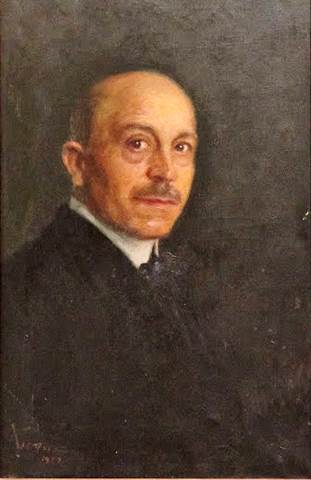
Juan José Gárate y Clavero was a Spanish painter; known for his portraits, landscapes and costumbrista scenes of Aragonese life.

Juan Nicolás Melé was an Argentine sculptor, painter, and art critic. Melé was a member of the Asociación Arte Concreto-Invención as well as co-founder of the Grupo Arte Nuevo.

Julia Wernicke was a painter and engraver from Argentina. She is known as the first animalist painter from Argentina, and was unique at the time in incorporating exotic animals into her paintings. She paved the way for female artists in Argentina through many firsts, especially within the discipline of engraving. Wernicke was one of the first women to have an individual exhibition of works in Buenos Aires, in 1897; and the first person to have an individual exhibition of engraved etchings in Argentina, in 1909.
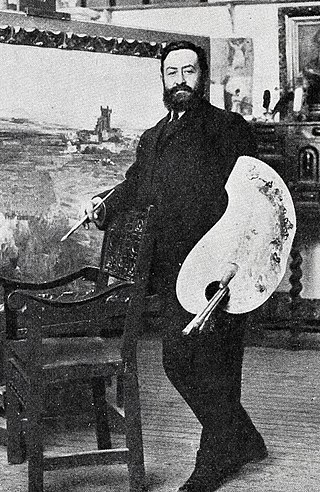
Marceliano Santa María was a Spanish painter, noted for his Castilian landscapes, historical art, and portraits.

Manuel García Hispaleto, originally Manuel García y Martínez was a Spanish painter; known for portraits and costumbrista scenes. His brother, Rafael García Hispaleto, was also a painter. Many sources refer to him as Manuel García y García, but his mother's maiden name appears to have been Martínez.

Buenaventura Álvarez Sala Vigil was a Spanish painter and illustrator; known for portraits and genre scenes, many involving maritime subjects.

Antonio Ortiz Echagüe was a Spanish costumbrista painter, who spent much of his career in other countries. Alongside Ignacio Zuloaga and Joaquin Sorolla, he forms part of the trio of aces of Spanish costumbrist painting at the turn of the twentieth century. The recognition and international awards which he won, as well as the presence of his paintings in first-rate museums in Europe, U.S.A. and South America, give witness to the extraordinary relevance of this painter, who knew how to blend tradition with modernity. He was the older brother of the photographer, engineer and entrepreneur, José Ortiz Echagüe.
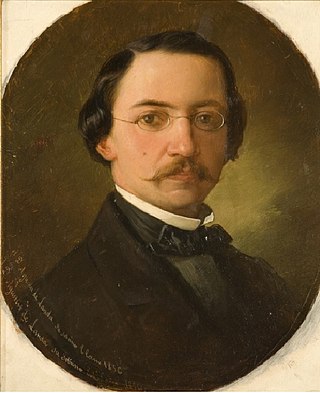
Eduardo Cano de la Peña was a Spanish painter in the Romantic style; specializing in historical scenes.




















